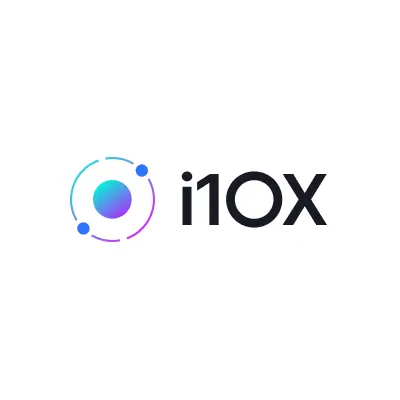AI Qualitative Data Analysis Tool

The Rise and Fall of Viable: What Happened to the AI-Powered Customer Feedback Startup?
Ever heard of Viable, the AI-driven platform designed to analyze customer feedback and turn unstructured data into business insights? If you’ve tried looking for askviable.com recently, you may have noticed it’s no longer online.
So, what happened? Why did a company that seemed to be thriving suddenly disappear?
Let’s take a deep dive into Viable’s journey—how it started, what made it appealing, and why it ultimately failed.
What Was Viable?
Viable was an AI-powered analytics platform that specialized in parsing qualitative customer feedback from multiple sources—support tickets, surveys, social media interactions—and converting it into actionable insights. The startup leveraged natural language processing (NLP) models like OpenAI’s GPT-4 to help businesses understand sentiment, detect recurring themes, and make data-driven decisions.
Key Details About Viable
- Founded: 2020
- Founder: Daniel Erickson
- Industry: AI-driven business analytics, customer feedback analysis
- Key Features: Sentiment analysis, topic modeling, report automation
- Supported Integrations: Zendesk, Intercom, Slack, and other customer support tools
- Total Funding: ~$9 million (as of 2024)
Viable started strong, carving out a niche for itself among businesses seeking deeper customer insights without hiring dedicated data analysts. It gained early traction with AI-powered customer experience solutions that targeted companies struggling with large volumes of unstructured feedback.
However, despite promising technology and solid initial funding, Viable ultimately ceased operations. So, what went wrong?
Why Did Viable Fail?
Short Answer:
Viable struggled with scalability, intense competition, and monetization challenges. Despite offering an AI-powered solution with real business applications, it faced issues balancing innovation with sustainable growth, leading to its eventual downfall.
Long Answer:
A combination of factors led to Viable’s demise. Let’s break down the major reasons:
1. Struggles with Product-Market Fit
While Viable’s AI-driven insights were powerful, they didn’t fully align with what businesses needed in the long run. Despite its ability to summarize customer sentiment, many companies still preferred in-depth human analysis, making Viable more of a "nice to have" tool rather than a must-have solution.
Additionally, its AI-generated reports were sometimes too generic or lacking in nuance. Many customers found themselves double-checking the insights, limiting the time savings Viable promised.
2. Monetization and Revenue Struggles
Viable operated on a SaaS (Software-as-a-Service) model, charging businesses based on usage. However, its pricing structure often deterred smaller businesses unwilling to pay high fees for AI-driven insights when simpler (and cheaper) data visualization tools existed.
Larger enterprises, on the other hand, often had in-house data science teams, reducing their need for third-party AI-driven analytics. This left Viable in an awkward middle ground—too expensive for small businesses, but not essential enough for large organizations.
3. Competition from Industry Giants
While Viable was innovative, it wasn’t the only player offering AI-driven customer insights. Companies like:
- Zendesk (offering built-in AI-powered support analytics),
- Qualtrics (with advanced customer experience dashboards),
- MonkeyLearn (an AI text analysis tool), provided similar or superior tools, often bundled with additional services that made them more attractive to businesses.
Viable struggled to differentiate itself in a landscape where existing platforms had already built trust with enterprise customers.
4. Leadership and Strategic Challenges
While Viable’s founders were experienced in data science and AI, leading a tech startup requires more than just great technology. The company faced difficulties transitioning from an early-stage startup to a sustainable mid-sized business.
There were reports of inefficiencies in how the company managed its growth strategies, with some employees and customers questioning its ability to scale while maintaining quality.
5. Funding Limitations and Runway Issues
Viable raised around $9 million in funding but failed to secure larger rounds beyond its 2024 investment. With AI startups requiring significant R&D investment (cloud computing costs, AI model training, enterprise sales efforts), Viable ultimately found itself running out of money before achieving stability.
Many AI startups face the "funding trap"—either grow aggressively with investor money or reach profitability quickly. Unable to scale profitably, Viable fell into the common early-stage SaaS struggle of expensive customer acquisition without high-enough retention.
6. Changing Tech and Market Trends
In the broader AI industry, advancements like OpenAI’s release of ChatGPT Enterprise and Google's AI business solutions made real-time customer insights even more accessible. Businesses that once considered Viable's service useful began adopting general AI tools to perform similar tasks, often at lower costs or integrated into existing workflows.
This shift made it harder for Viable to justify itself as a standalone platform.
Lessons from Viable’s Failure
What can we learn from Viable’s rise and fall? A few key takeaways:
- AI alone doesn’t guarantee success – While AI-powered insights are valuable, they need real business applications and long-term user retention strategies.
- Being a middle-market product is tough – Viable’s pricing and positioning alienated both small businesses and large enterprises, limiting its potential growth.
- Competition in AI analytics is fierce – Even well-funded AI startups struggle against industry giants like Zendesk and Qualtrics.
Ultimately, Viable’s story is a reminder that building a sustainable AI-driven tech company is about more than just great technology—it’s about fitting into the ecosystem in a way that companies can’t live without.
FAQs About Viable
Who founded Viable?
Viable was founded by Daniel Erickson in 2020.
When did Viable shut down?
Viable's website, askviable.com, went offline in 2025, suggesting either a shutdown or an acquisition. However, no official statement was released about its closure.
How much funding did Viable raise?
Viable raised approximately $9 million in funding, with its last known investment round occurring in 2024.
What did Viable do?
Viable provided AI-driven customer feedback analysis, helping businesses gain insights from unstructured qualitative data using NLP models.
Why did Viable fail?
Viable struggled with product-market fit, competition from larger AI analytics firms, monetization challenges, and funding limitations, making it difficult to sustain operations.
Could Viable have survived?
Possibly, if it pivoted toward stronger enterprise integrations or a more sustainable pricing model. However, competition and shifting AI industry trends made survival increasingly challenging.
Final Thoughts
Viable had a bold vision: to make AI-driven customer insights effortless. However, like many AI startups, it faced tough economic realities—balancing innovation with profitability, staying ahead of competition, and ensuring a long-term market need for its product.
While Viable is no longer around, its story serves as an example of how even promising AI startups need more than just technology to succeed.
What is askviable.com?
Askviable.com is the official website for Viable, a company specializing in leveraging AI and GPT-4 technology for the comprehensive analysis of qualitative data at scale. Founded by brothers Dan and Jeff Erickson, Viable's mission is to enhance human intelligence by empowering users to gain valuable insights into their customers with minimal effort, shifting the focus from laborious data analysis to effective decision-making. The platform eliminates the reliance on spreadsheets, offering deep insights into customer feedback and enabling teams to better understand audience needs and act swiftly.
What kind of data can askviable.com analyze?
Viable's AI-powered platform excels in analyzing diverse forms of unstructured data, encompassing:
- Customer feedback
- Social media comments
- Survey responses
- Sales call transcripts
- Customer support tickets
- Market research
- Employee surveys
Leveraging advanced AI and machine learning algorithms, the platform interprets and comprehends this data comprehensively. It identifies patterns, sentiments, and behaviors within the data, offering nuanced insights beyond simple keyword detection or volume metrics. This depth of understanding enables businesses to make well-informed decisions based on a thorough comprehension of customer experiences and needs.
How accurate is analysis of askviable.com?
Viable's analysis is renowned for its remarkable accuracy, attributed to its utilization of GPT-4 for qualitative data analysis. This cutting-edge technology enables the platform to conduct thorough analyses with exceptional precision, even at a large scale. Unlike mere summarization, Viable's approach delves deep into understanding the context and sentiment underlying the data, a critical aspect for genuine comprehension.
The AI models employed by Viable have undergone rigorous fine-tuning through deep learning processes. This meticulous refinement ensures that the insights provided are not only precise but also enriched with context. Consequently, Viable is adept at interpreting subtle nuances in text, such as sarcasm, humor, and sentiment, which often pose challenges for conventional data analysis methods.
Through leveraging advanced Natural Language Processing (NLP) capabilities, Viable offers actionable insights that can significantly impact various aspects of businesses. These insights can facilitate improvements in Net Promoter Score (NPS), reduction of support ticket volumes, and informed adjustments to product roadmaps, all while optimizing operational costs. This sophisticated level of analysis aims to assist businesses in navigating vast amounts of data generated from customer feedback, empowering them to make data-driven decisions that propel their enterprises forward.
How does askviable.com handle privacy and data security?
Viable prioritizes privacy and data security, adhering to industry best practices for handling and safeguarding data. Their commitment extends to robust measures for data ingestion, handling, and protection, along with prompt responses to vulnerabilities or incidents. The company aims to maintain a high standard of security for both customer data and its own operational data.
In the realm of AI and privacy, handling personal data poses challenges and potential risks. AI systems, especially those utilizing large language models like GPT-4, may raise concerns regarding control, use, and correction or removal of personal information due to their data-intensive nature and scale of operation.
To address these challenges, Viable likely employs various strategies:
- Data anonymization: Ensuring personal information is not identifiable in datasets.
- Data minimization: Collecting only necessary data for specific tasks.
- Secure data storage: Utilizing encrypted storage solutions to prevent unauthorized access.
- Regular audits: Conducting periodic security assessments to detect and rectify vulnerabilities.
Furthermore, Viable's privacy and security practices align with current data protection laws, which typically mandate measures to safeguard personal information and require transparency regarding data usage.
For comprehensive details on their privacy policies and security protocols, individuals are encouraged to refer directly to Viable's official documentation or reach out to their support team.
How much does askviable.com cost?
Viable provides flexible pricing options tailored to accommodate the diverse needs and sizes of businesses:
Startup Plan: Designed for early-stage businesses at $600 per month. This plan encompasses up to 2,000 datapoints monthly, unlimited seats and data sources, extensive data integrations, dedicated onboarding, and top-tier email and live chat support.
Growth Plan: Geared towards expanding companies priced at $1,000 per month. It offers up to 5,000 datapoints monthly, inclusive of all features available in the Startup plan.
Enterprise Plan: A customizable solution for businesses seeking robust customer research, UX enhancement, or feedback loop refinement. Pricing and datapoint allocation are tailored to meet the specific requirements of each company.
Each datapoint represents a distinct piece of feedback, such as a survey response or product review, with more intricate data like call transcripts potentially counting as multiple datapoints. Additionally, Viable provides dedicated support personnel, custom reports, and the option to train AI with proprietary data across all plans.




























